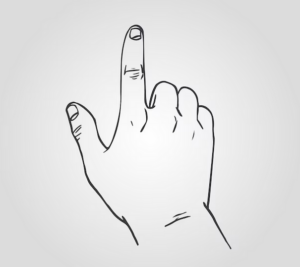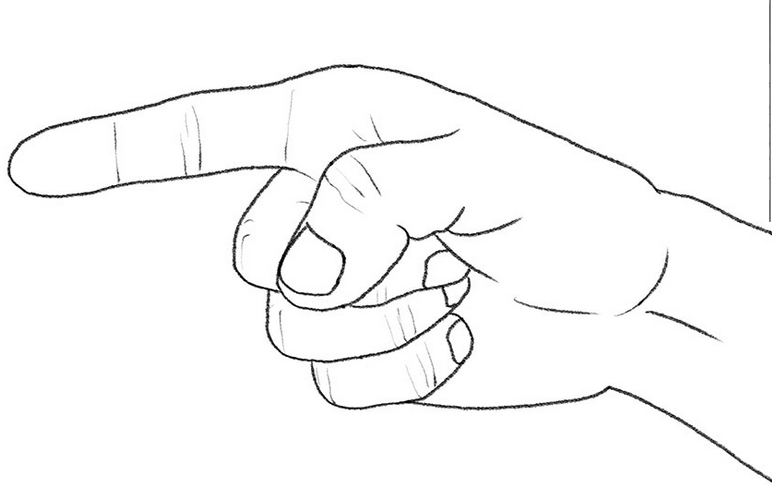
Understanding Finger Anatomy
Before diving into drawing, it’s essential to understand the anatomy of a pointing finger. Start by observing your hand and noting the proportions and structures of the fingers. Pay attention to the length of each segment, the curvature of the joints, and the shape of the nails. This observation will serve as a foundation for creating realistic finger drawings.
Sketching the Basic Shape
Begin by lightly sketching the basic shape of the pointing finger using simple lines and shapes. Start with a long oval for the main body of the finger and add smaller ovals for the joints. Pay attention to the angles and curves of the finger, ensuring that it looks natural and anatomically correct.
Adding Details
Once you have the basic shape sketched out, start adding details to bring the finger to life. Add wrinkles and creases around the joints to mimic the natural folds of the skin. Define the contours of the nail bed and add texture to the nail surface. Remember to vary the thickness of your lines to create depth and dimension.
Refining the Drawing
With the details in place, take some time to refine your drawing, paying attention to proportion, symmetry, and balance. Use reference images to guide you and make adjustments as needed. Focus on capturing the subtle curves and angles of the finger, ensuring that it looks realistic from every angle.
Shading and Texturing
To add depth and realism to your pointing finger drawing, incorporate shading and texturing techniques. Start by identifying the light source and shading the finger accordingly, paying attention to areas of light and shadow. Use hatching and cross-hatching techniques to create texture and volume, adding dimension to the drawing.
Final Touches
Once you’re satisfied with the shading and texturing, take some time to add final touches to your drawing. Use a kneaded eraser to lighten areas that are too dark and refine the details. Add highlights to areas of the finger that catch the light, further enhancing the three-dimensional effect.
Practice and Patience
Like any skill, mastering the art of pointing finger drawing takes practice and patience. Don’t be discouraged if your early attempts don’t turn out as expected. Keep practising, experimenting with different techniques, and studying the work of other artists. With time and dedication, you’ll see improvement in your drawing skills.
Choosing the Right Tools
Selecting the right tools is crucial for achieving the desired results in pointing finger drawing. Opt for quality pencils with varying degrees of hardness to create different levels of shading and detail. A set of graphite pencils ranging from 2H to 6B will provide you with a good range of tones to work with. Additionally, invest in a good quality eraser, such as a kneaded eraser, for making corrections and refining details without damaging the paper.
Observation and Study
One of the most effective ways to improve your pointing finger drawing skills is through observation and study. Take the time to observe real-life pointing fingers in various poses and angles. Pay attention to the subtle curves, wrinkles, and shadows that define the finger’s structure. Study anatomy books and reference images to deepen your understanding of finger anatomy and proportion. By studying real-life examples and reference materials, you’ll gain valuable insights into how to accurately capture the nuances of pointing fingers in your drawings.
Conclusion
Pointing finger drawing is a valuable skill for artists of all levels, allowing them to convey emotions, gestures, and directions with precision and realism. By following the tips and techniques outlined in this guide and dedicating yourself to regular practice, you can master the art of pointing finger drawing and take your artwork to new heights.

